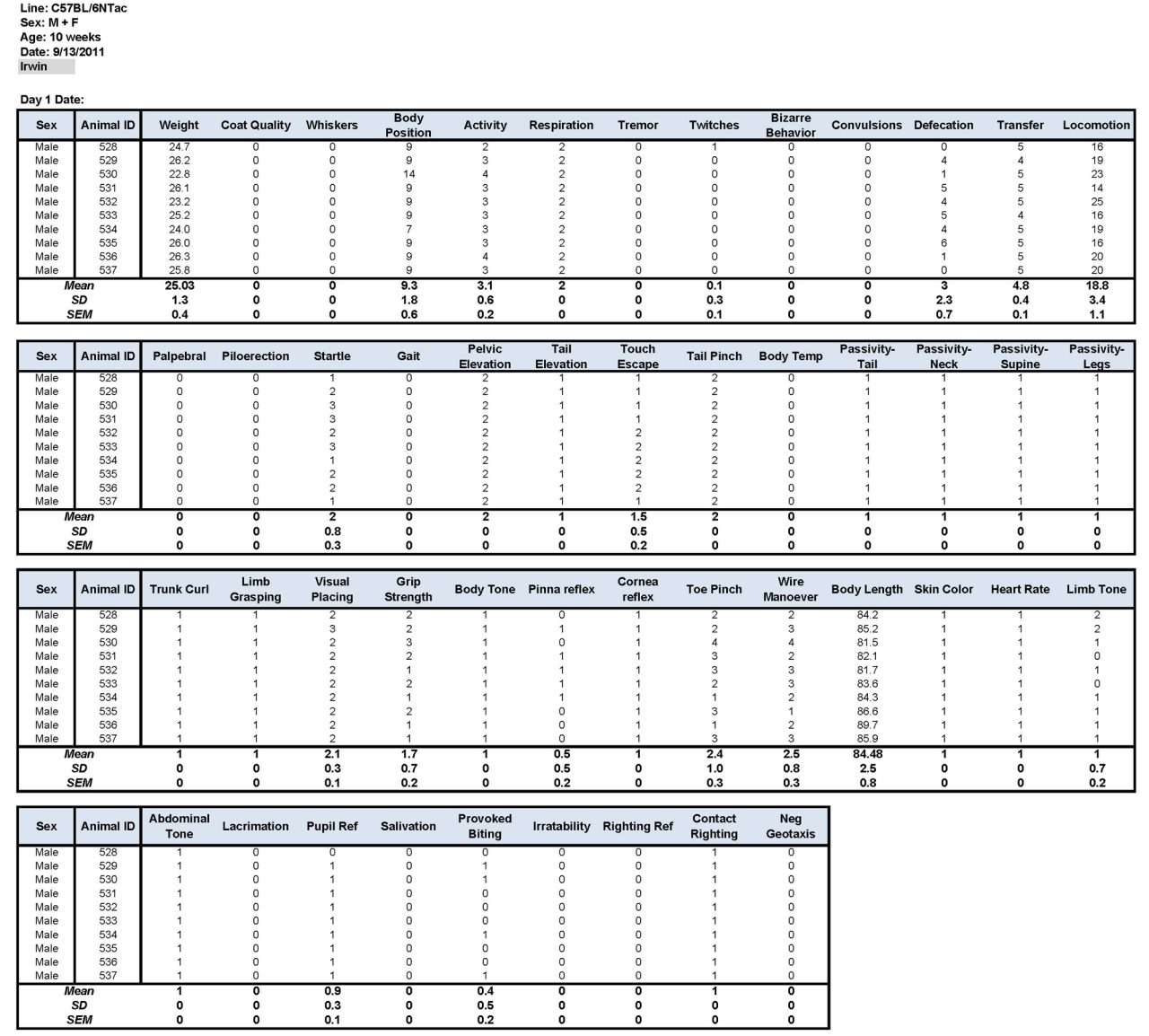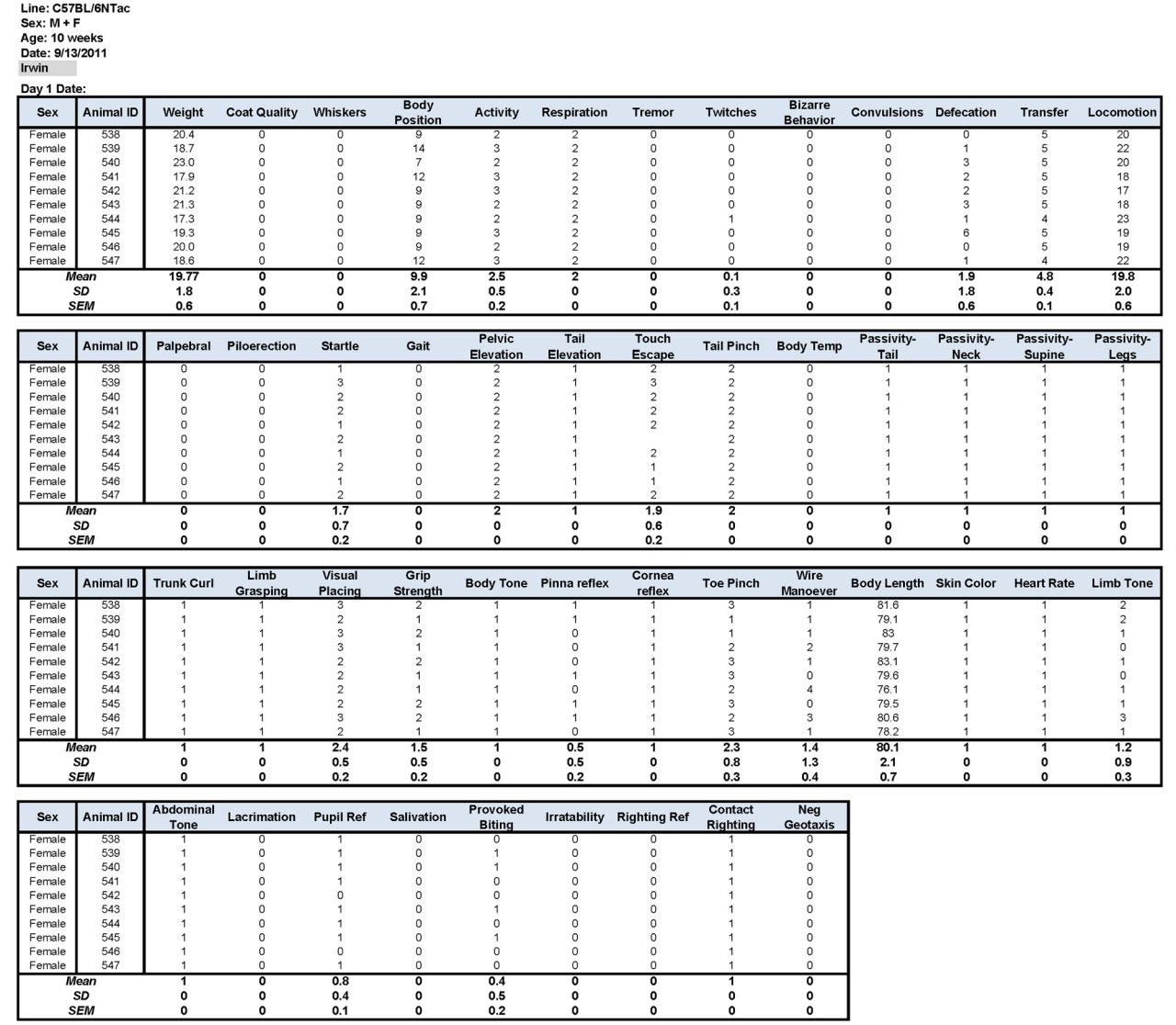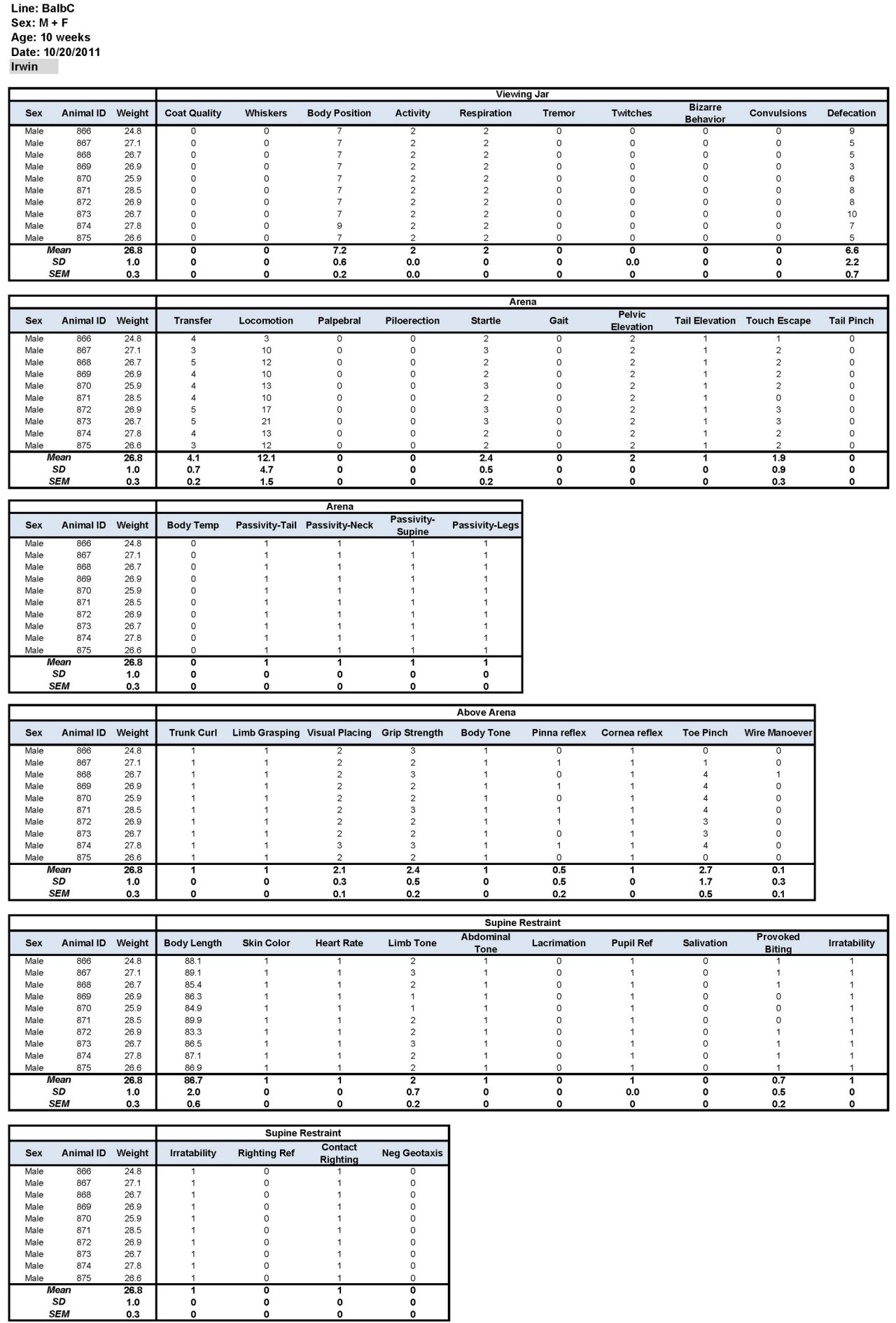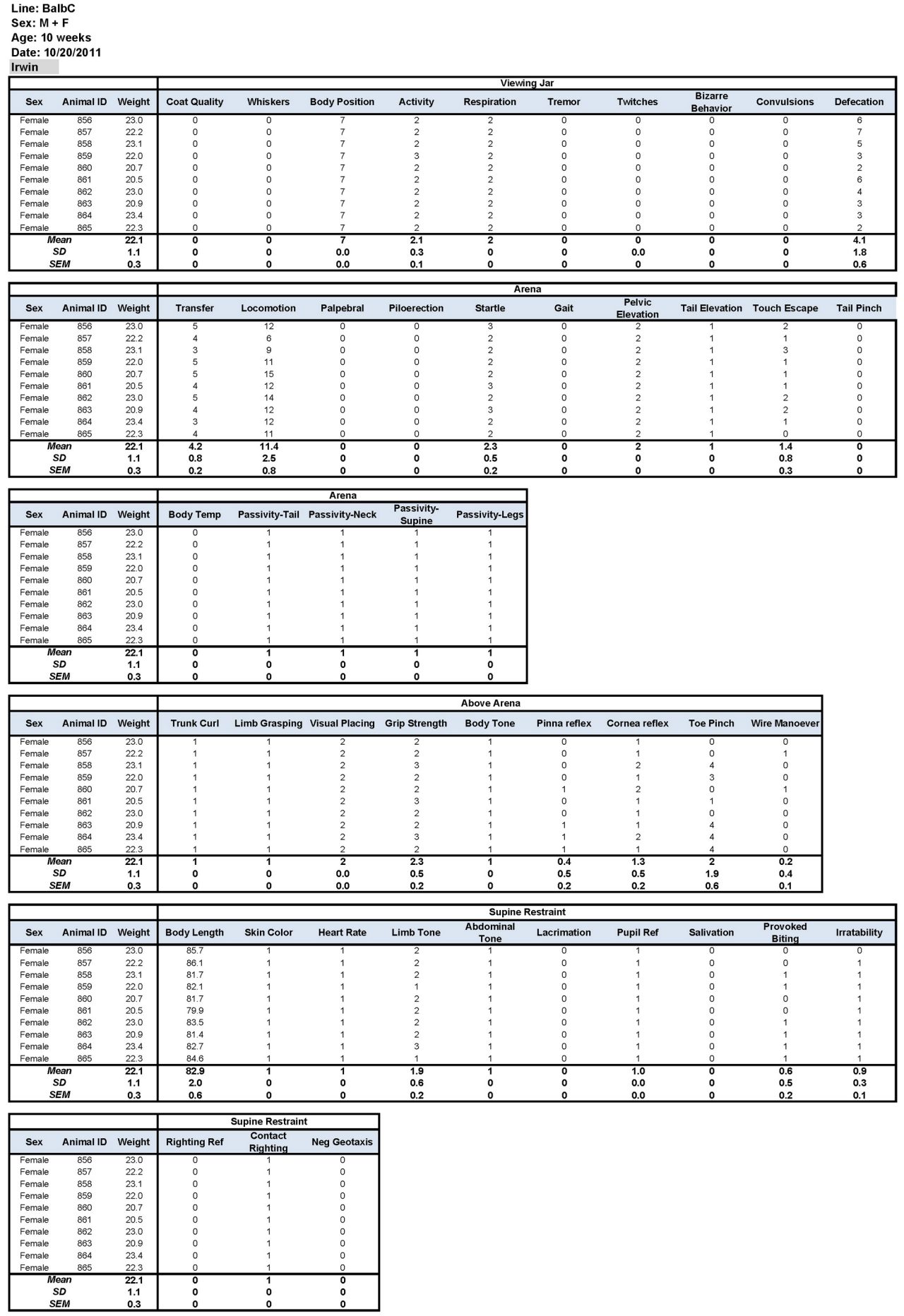Irwin
Rationale
Gross examination of animals is often a useful first step to evaluate a potential pharmacological effect or an effect of a gene knockout. The Irwin observational battery systematically assesses animals in four major categories: physical characteristics, behavioral responses, neurological responses, and autonomic responses. The mice are observed by a trained operator, who assesses 48 individual endpoints to identify abnormalities and score the behavioral and physiological state of the mice.
Methods
The testing occured towards the beginning of the light cycle, between 8-11 am. (The lights go off at 8:00 PM.) The mice were acclimated to the testing room for at least 30 minutes. The Irwin test equipment (timer, viewing jar and support, open arena, grid, ruler, sound box, wood sticks, kimwipes box) was placed under a laminar flow hood. Each mouse was first placed in the viewing jar for five (5) minutes and the following parameters were scored.
- General appearance - coat quality, whiskers
- Body position
- Spontaneous activity
- Respiration rate
- Tremors
- Twitches
- Bizarre behavior - comments
- Convulsions
- Defecation - number of feces at the end of the session
At the end of the five-minute-period, the viewing jar with the mouse in it was transferred to the arena, where the jar was disassembled and the mouse released into the arena. The mouse was not handled by the experimenter. The following parameters were scored in the arena in the following order:
- Transfer arousal - during the 10 first seconds
- Locomotor activity - number of squares entered by all four feet in 30 seconds
- Palpebral closure
- Piloerection
- Startle response - 90dB sound from clickbox 30cm above arena
- Gait
- Pelvic elevation
- Tail elevation - during forward motion
- Touch escape - finger stroke from above
- Tail pinch - with forceps 3 cm from the base of tail
- Body temperature - hypo- or hyperthermia
- Positional passivity - struggle response to sequential handling by tail, neck, hind legs, or held supine
Then the mouse was picked up by its tail and kept above the arena to score the following set of parameters:
- Trunk curl
- Limb grasping
- Visual placing - extension of forelimbs when the animal was lowered by base of tail from a height of 15cm above a wire grid
- Grip strength - the mouse was lowered and allowed to grip the grid; gentle horizontal backwards pull is applied
- Body tone - sides of mouse were compressed between thumb and index finger
- Pinna reflex - mouse was gently restrained on grid and the proximal part of the inner cathus was touched lightly with the tip of fine wire probe; ear retraction was observed
- Corneal reflex - the mouse was gently restrained on grid and the cornea is touched lightly with the side of fine wire probe; eye-blink response is observed
- Toe pinch - the mid digit of hind foot was gently compressed laterally with fine forceps. The hind limbs are lifted clear of the grid.
- Wire Maneuver - the mouse was held above the wire by tail suspension and lowered to allow the forelimbs to grip the horizontal wire; The mouse was held in extension and rotated around until horizontal and released
The mouse was then placed in supine restraint to score the below parameters in the following order:
- Body length - from tip of nose to base of tail (mm)
- Skin color - plantar surface and digits of forelimbs
- Heart rate - felt by palpation below sternum.
- Limb tone - resistance to gentle finger tip pressure on plantar surface of left/right hind paw
- Abdominal tone - palpation of abdomen
- Lacrimation
- Pupil reflex
- Salivation
- Provoked biting - a dowel rod was gently inserted between the teeth at the side of the animal's mouth
- Irritability
The final three parameters are scored with the mouse above or in the arena:
- Righting reflex - the mouse was held by the tail and flicked backwards through the air such that it performed a backward somersault when released; the landing position was observed
- Contact righting reflex - the mouse was placed into a plastic tube and turned upside down
- Negative geotaxis - the mouse was placed on a horizontal grid; the grid was raised to vertical with mouse facing the floor; behavior is observed for 30 seconds
















.jpg)

.jpg)
.jpg)
.jpg)
.jpg)





.jpg)


.jpg)
.jpg)




.jpg)




.jpg)

.jpg)






